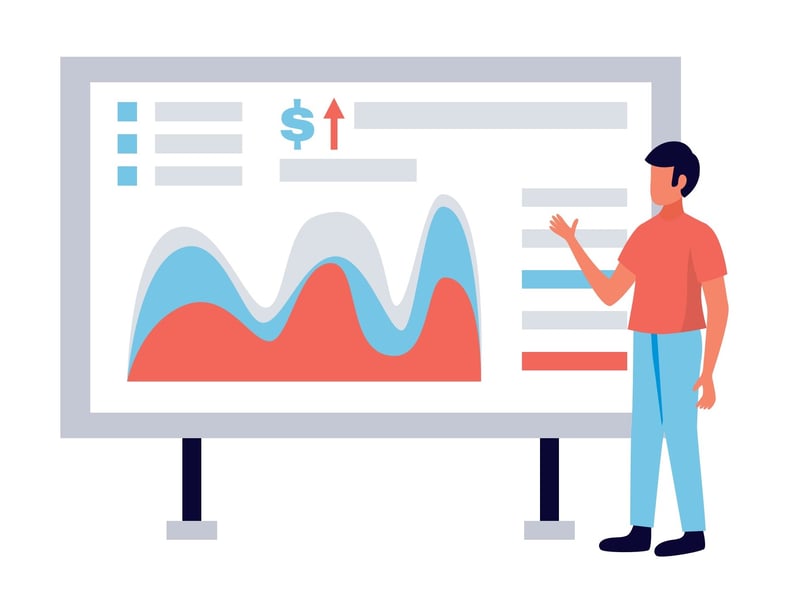Marketing and publicity are gradually evolving towards content creation. Inbound Marketing is a new marketing strategy that consists of attracting customers indirectly, through the creation of interesting content for target customers. Organisations are moving fast towards a context in which talking only about the benefits of their products and services —as has been done in advertising, marketing and communication for many years—, is no longer effective. Now, brands must go a step further and strive to create quality content to attract and fascinate customers in order to build stronger and more lasting bonds that go beyond a sale.

Buyer persona to get to know your clients
To develop this strategy effectively, companies need to know their customers. In fact, knowing our clients with data is already a primary need for any business and increasingly, exhaustive knowledge of the customer is becoming the basis of business strategies. In addition to creating more content, companies are increasingly relying on the power of customer centricity.
In their efforts to gain a deep understanding of their clients, organisations segment their customers by creating buyer personas. The creation of buyer personas is one of the key steps of the customer journey and consists of the development of archetypes of people —customers— that, ultimately, must synthesise the characteristics, needs, pain points, dreams and desires of each type of customer.
Buyer personas are semi-fictional representations, as they are largely based on real customer data —both socio-demographic and behavioural data— which brands then complement with additional information to create archetypes that are as complete, accurate and precise as possible. Therefore, data collection and data analysis are essential. Without quality data, there is no knowledge. Without knowledge, there is no action.
Buyer persona: customer segmentation to create a customer-centric strategy
The creation of buyer persona differs from other types of customer segmentation. This perspective is a deeper form of segmentation that humanises the customer and considers —in addition to socio-demographic data— personal and reflective aspects of customers such as their occupations and hobbies, their family situation, their problems, desires, needs, dreams, etc. In short, the buyer persona strategy builds 360º personalities and archetypes.
Thus, this classification is not only intended to answer who is the customer, but also what does the customer want and need?
Ready to create your buyer personas? Download our template to create buyer personas where you will find the step by step guide to create your buyer personas in the easiest way possible!
Ultimately, the objective of creating a buyer persona is to find out what the consumers' need or pain point is in order to offer them a solution that solves it, along with an experience that satisfies them and a communication plan that attracts and captivates them.
Beyond a deeper knowledge about the customer, creating buyer personas also helps brands to optimise their advertising, marketing and communication campaigns and, ultimately, ends up acting as a guide for all business strategies. This is, in short, the basis of the customer-centric strategy, which has been gaining relevance as digitalisation and data-driven culture have also done so. It consists of putting the customer at the core of the business mission and strategy. The aim is to focus all departments and business units on the consumer so that the decision-making process, strategy definition and implementation of actions is carried out thinking about what they want, need and prefer.
How to create a buyer persona? Example of a buyer persona
The first step in creating a buyer persona is customer data collection. As already mentioned, this data should cover more than socio-demographic information to find out who our customers really are.
Once we have the data, we must analyse it and transform it into information and knowledge. Only through this knowledge will we discover what similarities and differences our customers present among them. Thus, we can classify them into groups according to behavioural and personality similarities. Companies usually create between 3 and 8 buyer personas that represent their target customers.
After segmentation, we will create our buyer personas by transforming the customer groups into a story that builds a persona archetype. A buyer persona should include, at a minimum, the customer's demographics, level of education, employment status, interests, hobbies, leisure activities, family situation, social circles, dissatisfactions and needs, beliefs, values, opinions and goals.
We must remember that a buyer persona must create a story and that, when defining these aspects, we should not summarise them in a single word, but create a complete story exploring as many aspects of the personality of our buyer persona as we can.
Some of the aspects we should consider when creating our buyer persona are:
- Name, surname and age: It is important to give a name and surname to our buyer persona. This will help us humanise them and establish another aspect of their personality. After all, everyone has a name and, therefore, a buyer persona should too. Age is another highly relevant characteristic when it comes to outlining a person's personality and lifestyle. Obviously, a 16-year-old does not live or behave in the same way as a 50-year-old. Therefore, the age of our buyer persona must be consistent with the rest of the information we detail.
- Detailed employment and family situation: When defining the employment situation of our buyer persona, simply writing an occupational position is not enough. Instead, we must explain everything related to their job, both our character's and their immediate environment. For example, if our buyer persona is a 40-year-old female executive, we should explore whether she likes her job, whether she has ambitions for the future, whether she has relatives to take care of, whether she can combine her work with her social and family life, etc. It is also necessary to consider the person's salary and financial situation.
- Personality and interests: One of the key elements of our buyer persona is their personality and, especially, their interests. Customer interests are closely linked to their needs and consumption habits.
- Dreams and life goals: Our buyer persona must have medium or long-term goals. The mission of an organisation is to help customers achieve their goals through their products or services.
- Needs and pain points: It is essential to specify those pain points or needs that prevent our buyer persona from achieving their goals and dreams. This way, we will be able to identify what the customer needs and what we should offer them.
- Satisfactions: Once we are clear about the needs of our buyer persona, we must specify how our products or services will satisfy those needs. This is a crucial point, as it will help us to find out if we are really offering the customer what they need and to be able to make the necessary changes to improve our offer and the customer experience.
- Feedback: Today's customers have numerous channels to express their opinions. When creating a buyer persona, it can be very useful to use real customer feedback to guide and complement the personality, needs and pain points of our buyer persona.
Below we offer an example of a buyer persona:
In short, the creation of buyer personas helps organisations to get to know their customers better, to align their strategies and action plans with consumers' needs and to optimise customer strategies. In the current digitalised world, it is essential for companies to place the customer at the centre of their business strategy and to promote actions to transform their marketing, communication and sales strategies.
Before you go... don't forget to download our template to create your buyer persona!




